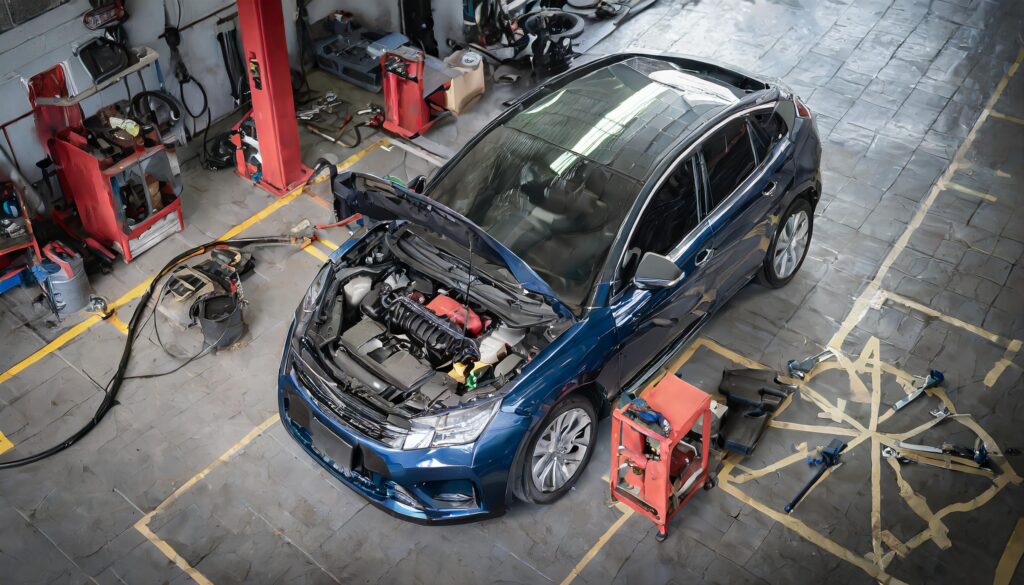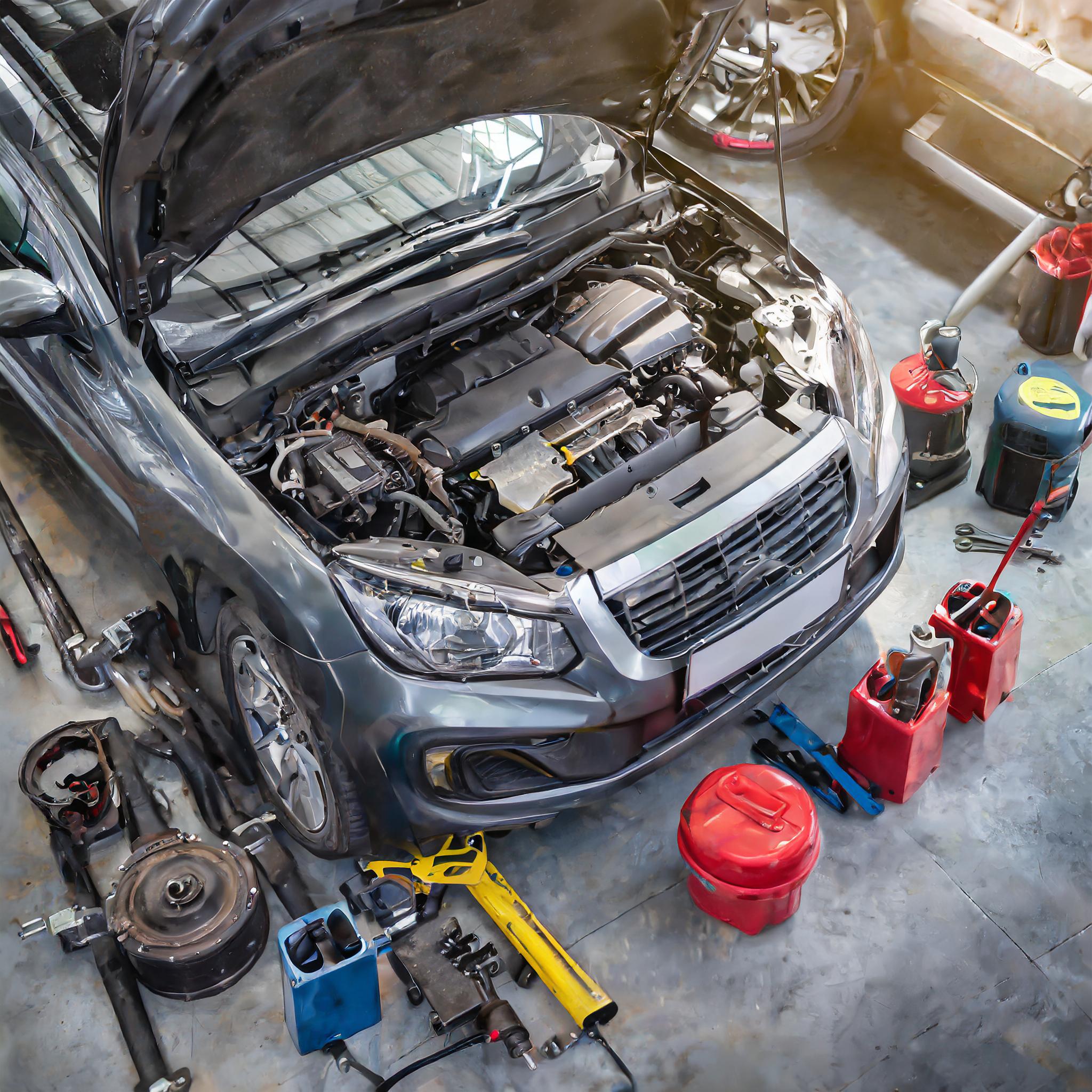1- Introduction
🧰 Regular maintenance isn’t just for mechanics it’s essential for every driver who wants their car to run safely and efficiently, By checking a few key items once a month, you can catch small problems before they turn into big (and expensive) repairs, In this guide, we’ll walk you through 10 simple yet powerful checks that take minutes but make a huge difference in performance and safety.
Table of Contents
2- 🛢️ Check Engine Oil
Engine oil plays a critical role in lubricating and cooling internal components, When it becomes dirty or runs low, it can lead to excessive heat and internal wear, To check it, park on level ground, wait for the engine to cool, pull out the dipstick, wipe it, reinsert, and pull it again to read the level, Monthly checks ensure your oil is clean and at the right level.
📍 Real-life : A driver in Nevada ignored their oil light for weeks until their engine seized on the highway. The repair cost over $4,000.
🧠 Story : Mike from Nevada ignored his oil warning light for three weeks, One morning, his engine seized on the freeway, A $30 oil change turned into a $4,500 engine replacement, Now, he checks it monthly without fail.
3- 🛞 Inspect Tire Pressure & Tread
Maintaining the right tire pressure improves grip on the road and helps your vehicle use fuel more efficiently, Use a tire pressure gauge and compare the readings to your car’s recommended PSI (usually found on a sticker inside the driver’s door), Also inspect your tire tread depth use a coin or tread gauge, If the tread is too shallow, especially below 2/32 of an inch, it’s time to replace your tires for optimal grip and safety.
🧠 Story : Sarah from Michigan skidded during a rainstorm because her tire tread was dangerously low, After her spin-out, she learned how simple tread checks could prevent scary close calls.
4- 🔋 Test the Battery
A weak battery might leave you stranded on a cold morning, Look closely for corrosion around the battery posts, pay attention to how quickly your engine starts, and test the charge with a reliable voltmeter or at a service center.
. Batteries typically last 3–5 years. If yours is getting old, test it monthly especially in extreme weather.
🧠 Story : Jason’s battery died at midnight while he was parked in a remote hiking area, Since then, he tests his battery regularly especially before weekend trips.
5- 🛑 Examine Brake System
Squeaky or grinding brakes aren’t normal, Listen for odd sounds and notice if the car pulls to one side, If your brake pedal feels soft or you see brake dust on the wheels, it might be time to inspect pads and rotors, Good brakes save lives don’t over look them.
🧠 Story : A rideshare driver in New York heard squeaks for weeks and ignored them until his brakes failed in traffic, Thankfully no one was hurt, but the emergency repairs weren’t cheap.

6- 💡 Look Over Lights & Signals
Walk around your car while someone else operates the headlights, brake lights, and turn signals, Replace any burnt-out bulbs promptly, Proper lighting ensures you’re visible at night and signals your intentions to others on the road.
🧠 Story: Lisa got a ticket and a nasty honk for failing to signal while changing lanes, Her turn signal bulb had burnt out, and she didn’t notice, Now, she checks her lights every few weeks.
7- 🚰 Top Off Essential Fluids
Your car depends on several fluids : coolant, transmission, brake, and washer fluid, Lift the hood and inspect the fluid reservoirs make sure each one is filled to the proper line and the liquid appears clean and free of debris, Contaminated or insufficient fluid levels may result in overheating or mechanical breakdowns, Refill with the correct type if needed.
8- 🌧️ Inspect Wipers & Windshield Washer System
Good visibility is essential streaky or noisy wipers should be swapped out promptly, Make sure the washer fluid reservoir is filled, especially before rainy or snowy seasons, Clean your windshield thoroughly to remove bugs or grime that impair your vision.
🧠 Story : During a snowstorm, Carlos couldn’t see the road because his wipers left streaks, Replacing them cost $12 much less than the cost of a crash.
9- 🌬️ Check the Air Filter
An air filter blocked with dust and debris can hamper engine power and raise fuel consumption, Pull it out (usually located in a black box near the engine) and hold it up to the light, If it looks dirty or dark, it’s time for a new one, Most filters are cheap and take only minutes to replace.
10- 🔍 Look Under the Car for Leaks or Damage
Once a month, peek under your vehicle for signs of trouble oil spots, coolant drips, or loose parts, If you spot fluid puddles or dangling components, get a mechanic’s opinion before the problem worsens.
🧠 Story : Emma saw a small brown spot in her driveway and thought it was nothing, A week later, her transmission failed, That small leak was a big warning she missed.
11- ✅ Final Thoughts
Taking just 15–20 minutes each month to inspect your vehicle can save you thousands in repairs and more importantly keep you and your passengers safe, Treat your car like your health : routine checkups are cheaper than emergencies, Stay alert, stay safe, and keep your car in top condition all year long!
➡️ Learn how :
🔋 How Emergency Braking Tech Saves Lives
📌 Internal Link :
NHTSA Maintenance Guidelines – U.S. Department of Transportation

